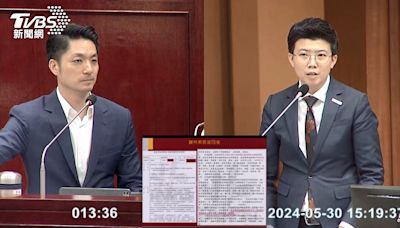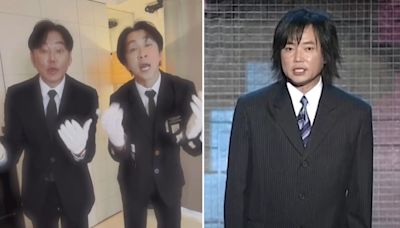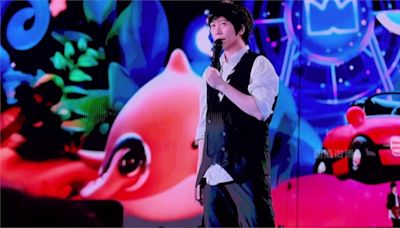搜尋結果
Andy Tai Chih-yuan ( Chinese: 邰智源; Pe̍h-ōe-jī: Thai Tì-goân, born 7 May 1965) is a Taiwanese comedian, actor, show host and YouTuber. He is a graduate of New York Institute of Technology. [1] [2] Filmography. Films. TV drama. References. ^ "14 Stars Who Are Smarter Than You Think".
The YES stroke alphabetical order, also called YES stroke-order sorting, briefly YES order or YES sorting, is a Chinese character sorting method based on a stroke alphabet and stroke orders. It is a simplified stroke-based sorting method free of stroke counting and grouping. [1] [2] [3] YES order has been applied to the indexing of Xinhua ...
The history of artificial intelligence (AI) began in antiquity, with myths, stories and rumors of artificial beings endowed with intelligence or consciousness by master craftsmen.The seeds of modern AI were planted by philosophers who attempted to describe the process of human thinking as the mechanical manipulation of symbols. . This work culminated in the invention of the programmable ...
e. An intelligence quotient ( IQ) is a total score derived from a set of standardised tests or subtests designed to assess human intelligence. [1] The abbreviation "IQ" was coined by the psychologist William Stern for the German term Intelligenzquotient, his term for a scoring method for intelligence tests at University of Breslau he advocated ...
- History
- Design
- Operation
- Models
- Surviving Machines
- Derivatives
- See Also
- External Links
The Enigma machine was invented by German engineer Arthur Scherbius at the end of World War I. The German firm Scherbius & Ritter, co-founded by Scherbius, patented ideas for a cipher machine in 1918 and began marketing the finished product under the brand name Enigma in 1923, initially targeted at commercial markets. Early models were used commerc...
Like other rotor machines, the Enigma machine is a combination of mechanical and electrical subsystems. The mechanical subsystem consists of a keyboard; a set of rotating disks called rotors arranged adjacently along a spindle; one of various stepping components to turn at least one rotor with each key press, and a series of lamps, one for each let...
Basic operation
A German Enigma operator would be given a plaintext message to encrypt. After setting up his machine, he would type the message on the Enigma keyboard. For each letter pressed, one lamp lit indicating a different letter according to a pseudo-random substitution determined by the electrical pathways inside the machine. The letter indicated by the lamp would be recorded, typically by a second operator, as the cyphertext letter. The action of pressing a key also moved one or more rotors so that...
Details
In use, the Enigma required a list of daily key settings and auxiliary documents. In German military practice, communications were divided into separate networks, each using different settings. These communication nets were termed keys at Bletchley Park, and were assigned code names, such as Red, Chaffinch, and Shark. Each unit operating in a network was given the same settings list for its Enigma, valid for a period of time. The procedures for German Naval Enigma were more elaborate and more...
Indicator
Most of the key was kept constant for a set time period, typically a day. A different initial rotor position was used for each message, a concept similar to an initialisation vector in modern cryptography. The reason is that encrypting many messages with identical or near-identical settings (termed in cryptanalysis as being in depth), would enable an attack using a statistical procedure such as Friedman's Index of coincidence. The starting position for the rotors was transmitted just before t...
The Enigma family included multiple designs. The earliest were commercial models dating from the early 1920s. Starting in the mid-1920s, the German military began to use Enigma, making a number of security-related changes. Various nations either adopted or adapted the design for their own cipher machines. An estimated 40,000 Enigma machines were co...
The effort to break the Enigma was not disclosed until the 1970s. Since then, interest in the Enigma machine has grown. Enigmas are on public display in museums around the world, and several are in the hands of private collectors and computer history enthusiasts. The Deutsches Museum in Munich has both the three- and four-rotor German military vari...
The Enigma was influential in the field of cipher machine design, spinning off other rotor machines. Once the British discovered Enigma's principle of operation, they created the Typex rotor cipher, which the Germans believed to be unsolvable. Typex was originally derived from the Enigma patents; Typex even includes features from the patent descrip...
Bletchley Park National Code Centre Home of the British codebreakers during the Second World War Archived 9 December 2009 at the Wayback MachineFibonacci sequence. In mathematics, the Fibonacci sequence is a sequence in which each number is the sum of the two preceding ones. Numbers that are part of the Fibonacci sequence are known as Fibonacci numbers, commonly denoted Fn . The sequence commonly starts from 0 and 1, although some authors start the sequence from 1 and 1 or sometimes ...
Bayes' theorem is named after the Reverend Thomas Bayes ( / beɪz / ), also a statistician and philosopher. Bayes used conditional probability to provide an algorithm (his Proposition 9) that uses evidence to calculate limits on an unknown parameter. His work was published in 1763 as An Essay towards solving a Problem in the Doctrine of Chances.





